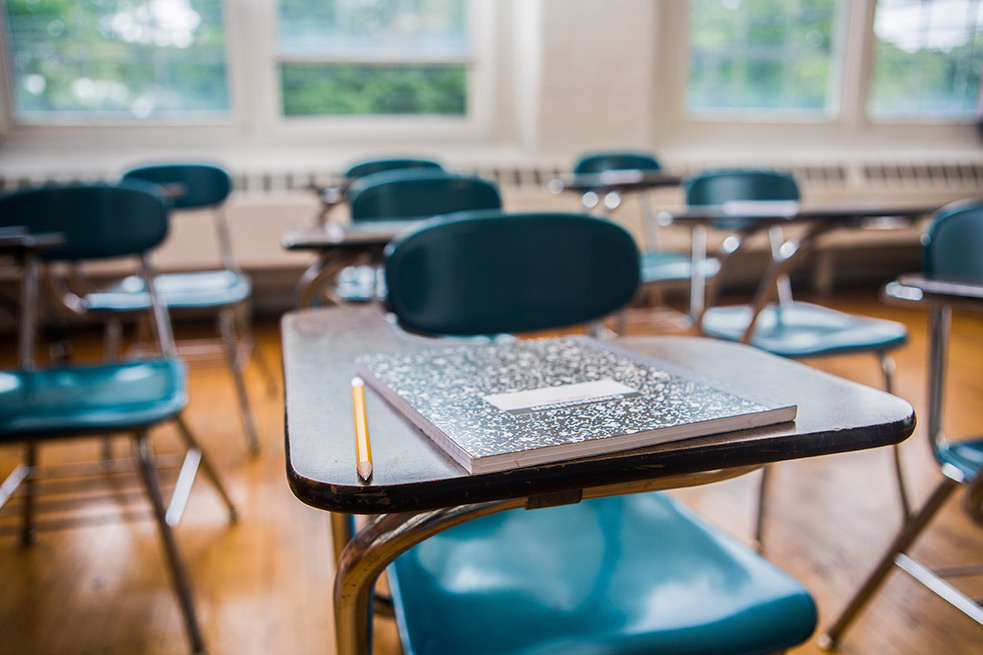
What happens when a teacher mixes Madame Bovary and a TED Talk? Good things, actually. Photo: iStockphoto
My high school English class had just finished reading Madame Bovary, and we were all confused. (For those of you who have not read it, please skip to paragraph two. Spoiler alert!) Emma Bovary, a listless housewife in search of the passionate love she’s read about in books, has many sordid affairs, falls deeply into debt and kills herself by swallowing arsenic, and her ever-faithful and terribly dull husband Charles dies a while later of a broken heart, and their daughter, upon finding her father dead, is sent to work in a cotton mill. We were all baffled and upset by the end of this intense, complicated novel. When we arrived in class the next day, our teacher asked us the question: “What can we learn about real love from Madame Bovary?” and no one knew what to say.
That night for homework, our only assignment was to watch a TED Talk: “Why we love, why we cheat” by anthropologist Helen Fisher. In the talk, Fisher explained her work: “My colleagues and I took 32 people who were madly in love and put them into a functional MRI brain scanner.” I knew that Helen Fisher was taking a very different approach to understanding love from Gustave Flaubert. So why was I reading Flaubert and watching her talk, one after the other?
I didn’t realize what my teacher was doing until class discussion the next day. We shuffled in, pulled our desks into a circle, took our copies of Madame Bovary out of our bags and looked around at each other.
“So,” my teacher said, “if Gustave Flaubert and Helen Fisher were having a conversation about love, what would they say to one another? What would you say to them?”
There was a pause, and then: “I mean, the thing about love being a drug, like cocaine, seems like Emma felt love like that?”
“But then what about Charles? Was he in love?”
“Well he wasn’t intense, and he wasn’t possessive. Maybe he wasn’t in love?”
“He died for love.”
“Did he die for love or for heartbreak?”
“What’s the difference?”
The discussion continued, back and forth.
What my English teacher did that day showed me the value of TED Talks in the classroom: school is all about ideas, and TED can help teachers bring ideas into conversation and debate. TED Talks aren’t like Wikipedia articles—yes, they contain information, but at their best, they actually spark a conversation. They can be used to bring diverse voices, questions, and even conflict into classroom discussions—as Helen Fisher’s did for my English class. Physics classes can start to think about just how non-linear physics really is with Boaz Almog’s demonstration of quantum superconductors, history classes can think about Yoruba Richen’s talk and wonder about how rights movements work, students can even question the school system they are a part of with Ken Robinson’s talk on how schools creativity.
I graduated from high school in May. (I’ve spent the summer before college interning with the lovely editorial department at TED.) Throughout my high school career, I’ve seen teachers use TED Talks often—sometimes very well, and sometimes in ways I didn’t find as effective. I recently got in touch with a former teacher from my school, Suzanne Fogarty (now the director of the Lincoln School in Providence, Rhode Island), who showed Chimamanda Adichie’s TED Talk, “The danger of a single story,” in an assembly. Afterward, Adichie’s talk popped up in lectures, lunchtime discussions, even in the hallways between classes. Her ideas had entered the vocabulary of the school. Everyone was thinking about the “single story.”
I wanted to find out why Ms. Fogarty chose to use TED in her curriculum. When I asked, she responded, “TED Talks make us pause and listen to the percolation of ideas—art, engineering, technology, the humanities, spoken word and more.”
Her comment clarified something for me. The best use of TED Talks in the classroom really do take advantage of that “percolation of ideas.” Talks work best when teachers use them to give perspective and to generate discussion around difficult topics.
But how exactly do you do this? Stephanie Lo, Director of TED-Ed Programs, advises teachers to use TED videos as a way to get students thinking. She recommends that teachers check out Ed.TED.com, which is packed full of short, animated lessons created specifically for students. (When searching, teachers can filter by student age—there are talks for elementary school students, middle school students, high school students and college students.) And she recommends that, whether they’re using a lesson or a talk, teachers prepare discussion questions to get students thinking before they get to class.
Fogarty echoes the sentiment. “I like having some essential questions to accompany the talk,” she told me, “or asking students to research TED Talks that carry meaning for their generation.”
These conversations helped me see what can really happen when TED Talks are brought into the classroom. Students can better grasp topics they might not fully understand at first glance, think critically about how they think about the world, and discuss other big ideas alongside their own. Gustave Flaubert can have a conversation with Helen Fisher about the meaning of love. And that is pretty cool.
[ted id=16]
[ted id=652]
Comments (15)